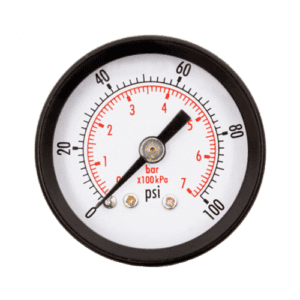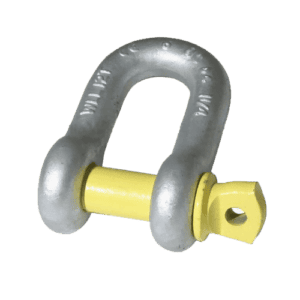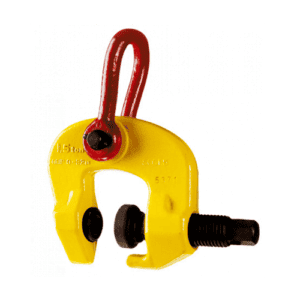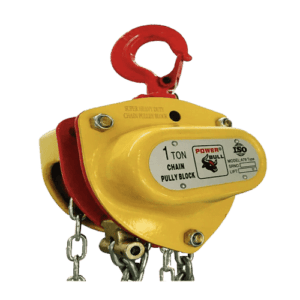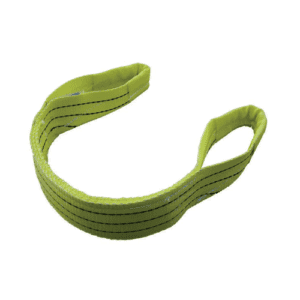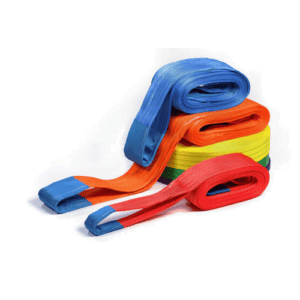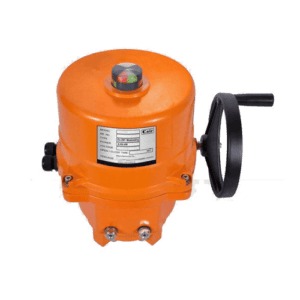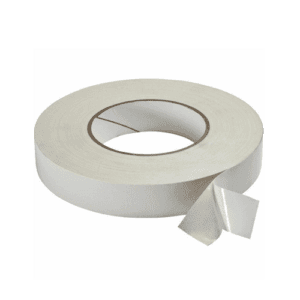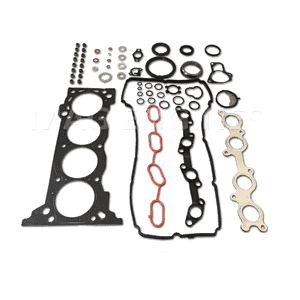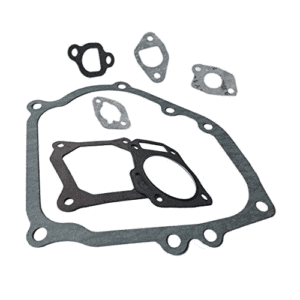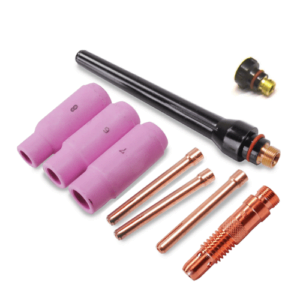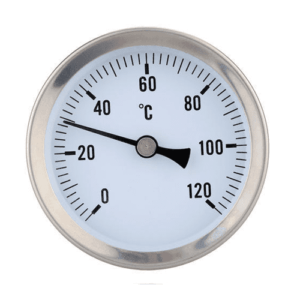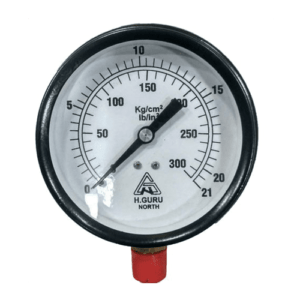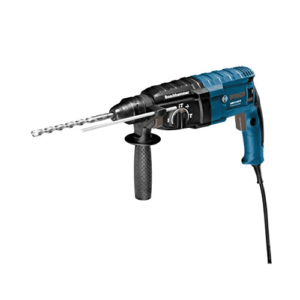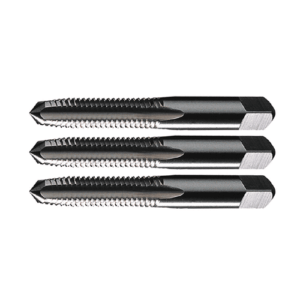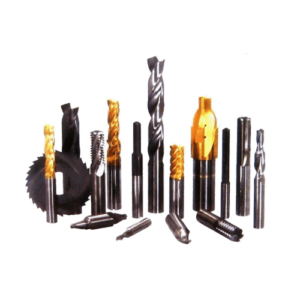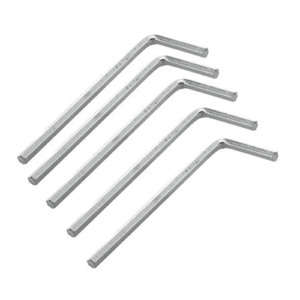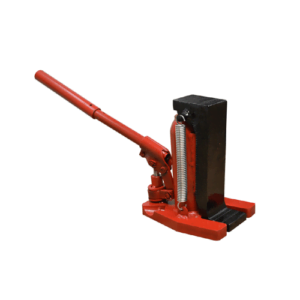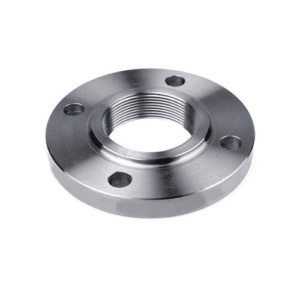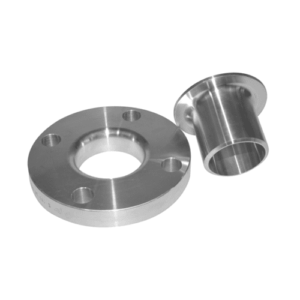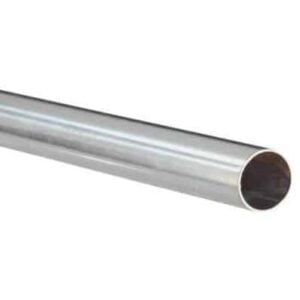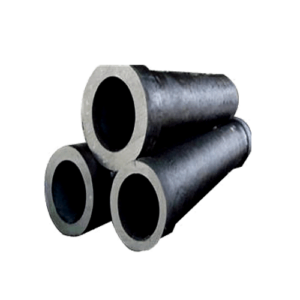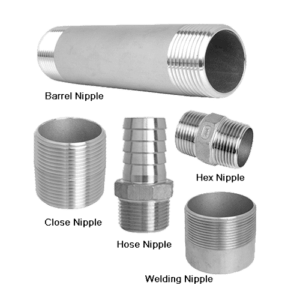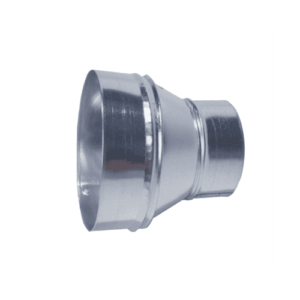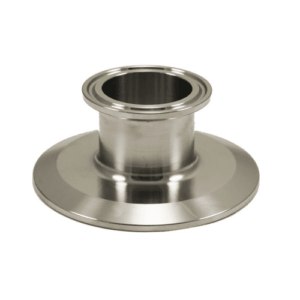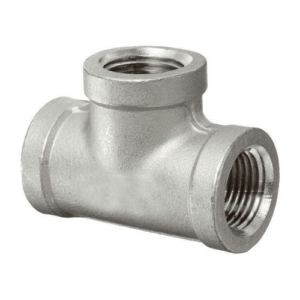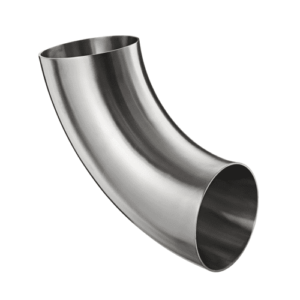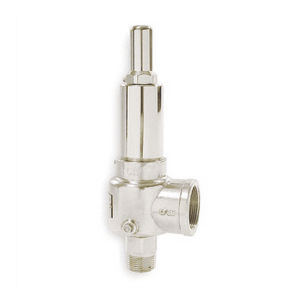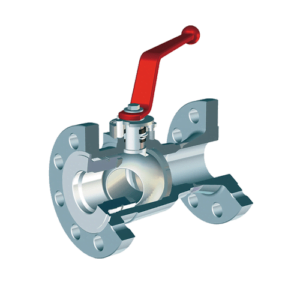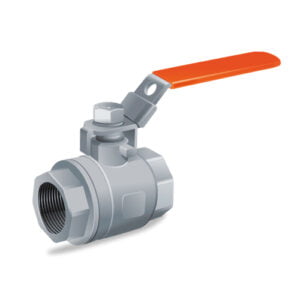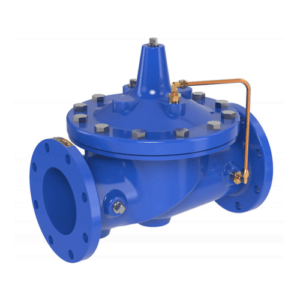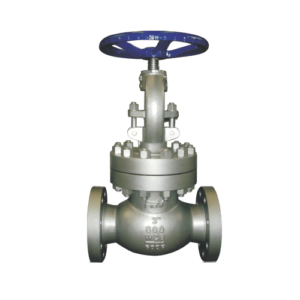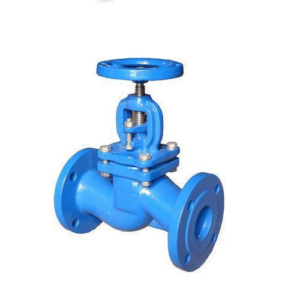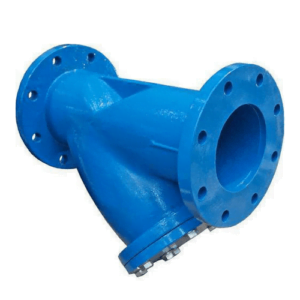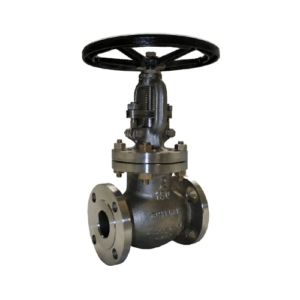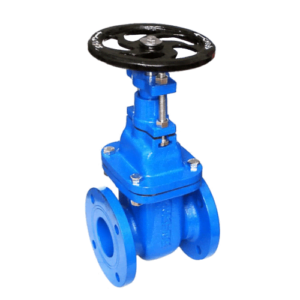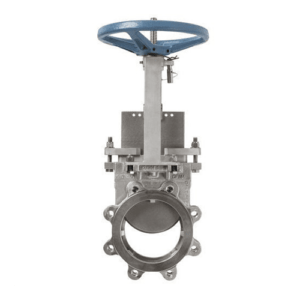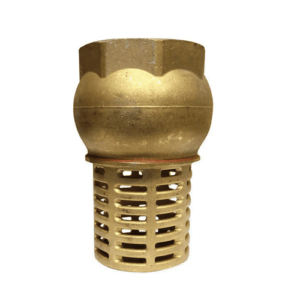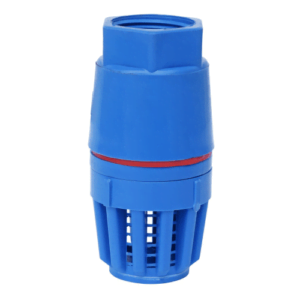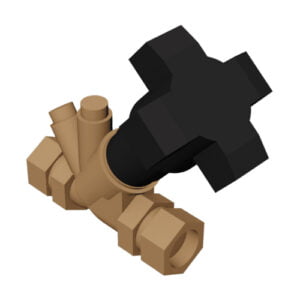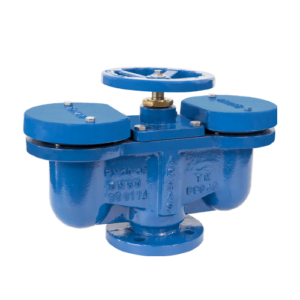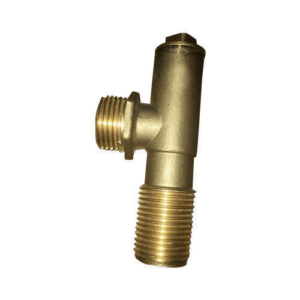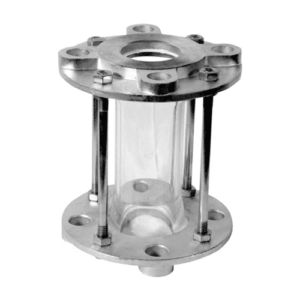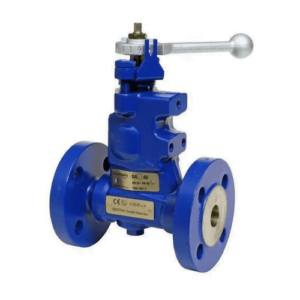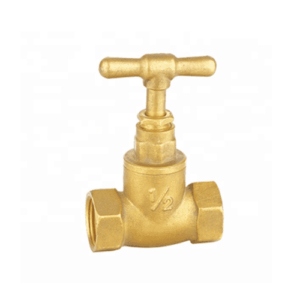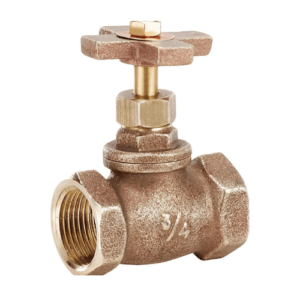Gauges
Gauges: A gauge or gage, in science and engineering, is a device used to make measurements or in order to display certain dimensional information. A wide variety of tools exist which serve such functions, ranging from simple pieces of material against which sizes can be measured to complex pieces of machinery.
D Shackle
D Shackle: Also known as a chain shackle, D-shackles are narrow shackles shaped like a loop of chain, usually with a pin or threaded pin closure. D-shackles are very common and most other shackle types are a variation of the D-shackle. The small loop can take high loads primarily in line.
Clamps
Clamps: Clamps are versatile tools that serve to temporarily hold work securely in place. They are used for many applications including carpentry, woodworking, furniture making, welding, construction and metal working.
Chain Pulley Blocks
Chain Pulley Blocks: A Chain Block (also known as a hand chain hoist) is a mechanism used to lift and lower heavy loads using a chain. Chain blocks contain two wheels which the chain is wound around. When the chain is pulled, it winds around the wheels and begins to lift the item that is attached to the rope or chain via a hook.
Webbing Slings
Webbing Slings: These web slings are lightweight, durable, and flexible so that they can be easily handled and rigged to a load. The Nylon and polyester web slings are unaffected by oil and grease and offer good chemical resistance.
Pneumatic Actuator
Pneumatic Actuator: A pneumatic control valve actuator converts energy into mechanical motion. The motion can be rotary or linear, depending on the type of actuator.
Motorized Actuator
Motorized Actuator: A valve actuator is the mechanism for opening and closing a valve. Manually operated valves require someone in attendance to adjust them using a direct or geared mechanism attached to the valve stem.
Both Side Gum Patti
Both Side Gum Patti: Created by applying a thin adhesive layer to each side of a carrier substrate material, double sided tape, also known as double-coated tape or double-faced tape, is widely used by a vast array of industries for applications such as bonding, holding, mounting, splicing and packaging.
Full Gaskets
Full Gaskets: A gasket is a mechanical seal which fills the space between two or more mating surfaces, generally to prevent leakage from or into the joined objects while under compression. Gaskets allow for “less-than-perfect” mating surfaces on machine parts where they can fill irregularities.
Ring Gaskets
Ring Gaskets: Ring Joint Gaskets. Ring Joint Gaskets. Sara metallic Ring Joint Gaskets are suitable for high pressure and high temperature applications. The Joint Gaskets are available in R, RX, BX styles and in oval/octagonal profiles. Sara manufacturers in accordance with specific tolerances on CNC machines.
PTFE Gaskets
PTFE Gaskets: Polytetrafluoroethylene (PTFE) is a synthetic fluoropolymer of tetrafluoroethylene that has numerous applications. It is also known by the common trade name Teflon®, which is trademarked by DuPont. PTFE can be modified for use as a gasketing material with strong chemical resistance properties.
Filler Wires
Filler Wires: Welding is a fabrication or sculptural process that joins materials, usually metals or thermoplastics, by using high heat to melt the parts together and allowing them to cool causing fusion.
Welding Cable
Welding cable: Welding cable is designed for use in electric arc-welding machines to power an electrode, a specially designed metal rod, that conducts a charge. The charge carried by the electrode is needed to produce an electric arc, the heat source, between the electrode and the metals being welded.
Welding Accessories
Welding Accessories: Welding gloves, aprons and helmets, dust masks, extraction systems and other safety equipment. Chipping hammers and wire brushes. Gas nozzles and contact tips for MIG/MAG welding. Tungsten rods for TIG/GTAW welding. Abrasive discs for angle grinders. Electrodes for resistance spot welding. Angle grinders. Electrode drying ovens.
Welding Hoses
Welding Hoses: Hoses are used across industries to transfer various types of fuel gases for welding and cutting. Fuel gases such as acetylene, propane, and butane utilize different types of welding hoses. A clamp helps lock the gas on the hose end of the nipple.
Electrode
Electrode: An electrode is a solid electric conductor that carries electric current into non-metallic solids, or liquids, or gases, or plasmas, or vacuums. Electrodes are typically good electric conductors, but they need not be metals.
Temperature Gauges
Temperature Gauges: A temperature gauge is a device used to indicate the temperature of an item being monitored. The display can be an analog dial, an analog range, or a digital readout.
Pressure Gauge
Pressure Gauge: Pressure measurement is the analysis of an applied force by a fluid (liquid or gas) on a surface. Pressure is typically measured in units of force per unit of surface area. Many techniques have been developed for the measurement of pressure and vacuum. Instruments used to measure and display pressure in an integral unit are called pressure meters or pressure gauges or vacuum gauges. A manometer is a good example, as it uses the surface area and weight of a column of liquid to both measure and indicate pressure. Likewise, the widely used Bourdon gauge is a mechanical device, which both measures and indicates and is probably the best-known type of gauge.
Ear Plug
Ear Plug: An earplug is a device that is inserted in the ear canal to protect the user’s ears from loud noises, intrusion of water, foreign bodies, dust or excessive wind. Since they reduce the sound volume, earplugs are often used to help prevent hearing loss and tinnitus.
Grinder Machines
Grinder Machines: A grinding machine, often shortened to grinder, is one of power tools or machine tools used for grinding, it is a type of machining using an abrasive wheel as the cutting tool. Each grain of abrasive on the wheel’s surface cuts a small chip from the workpiece via shear deformation.
Drill Machines
Drill Machines: A drill is a tool primarily used for making round holes or driving fasteners. It is fitted with a bit, either a drill or driver, depending on application, secured by a chuck. Some powered drills also include a hammer function.
Drills vary widely in speed, power, and size. They are characteristically corded electrically driven devices, with hand operated types dramatically decreasing in popularity and cordless battery powered ones proliferating. Drills are commonly used in woodworking, metalworking, machine tool fabrication, construction and utility projects. Specially designed versions are made for medicine, space, and miniature applications.
Tap Sets
Tap Sets: Tapping is when you threads are cut into a hole. A die set is used to cut threads onto a cylinder (bolt). To use a tap or a die, first determine the number of threads per inch (TPI) of the part to be fixed.
Drills
Drills: The drill’s mechanism is actually quite simple: A trigger switch activates an electric motor, which in turn drives a rotating chuck. Numerous accessories can fit into in the chuck, allowing the drill to bore holes, drive screws, and sand, polish, and grind a wide variety of materials.
Carbide Tools
Carbide Tools: Carbide tipped tools retain their cutting-edge hardness at high machining temperatures generated by high cutting speeds and feeds that reduce machining cycle time. Carbide tipped tools improve surface finish and hold size far longer for better quality.
Hammers
Hammers: A hammer is a tool consisting of a weighted “head” fixed to a long handle that is swung to deliver an impact to a small area of an object. This can be, for example, to drive nails into wood, to shape metal (as with a forge), or to crush rock. Hammers are used for a wide range of driving, shaping, and breaking applications.
Pliers
Pliers: Pliers are a hand tool used to hold objects firmly, possibly developed from tongs used to handle hot metal in Bronze Age Europe. They are also useful for bending and compressing a wide range of materials.
Allen Keys
Allen Keys: A hex key, Allen wrench or Allen key, is a simple tool used to drive bolts and screws with hexagonal sockets in their heads. The tool is usually formed of a single piece of hexagonal rod of hard steel, with blunt ends that are meant to fit snugly into the screw’s socket, bent in an “L” shape with unequal arms.
Hydraulic & Manual Jacks
Hydraulic & Manual Jacks: Working Principle of HYDRAULIC JACK or HYDRAULIC PRESS. The hydraulic jack is a device used for lifting heavy loads by the application of much smaller force. It is based on Pascal’s law, which states that intensity of pressure is transmitted equally in all directions through a mass of fluid at rest.
Tools Kits
Tools Kits: Tools and equipment are terms that are often used interchangeably without knowing the actual difference between tools and equipment, but in fact, they have different definitions. Tools and equipment are not only two words that are often used in day to day life, but also two utensils that are often used every day as well.
Tool Set has the tools you need to tackle a variety of tasks around the house. Whether you’re doing basic repairs, hanging pictures or cutting through boxes, this tool kit will equip you with the high-quality essentials required to complete many DIY projects.
RTJ Face
RTJ Face: RTJ flanges seal when tightened bolts compress the gasket between the flanges into the grooves, deforming (or “Coining”) the gasket to make Intimate Contact inside the grooves, creating a metal to metal seal. An RTJ flange may have a raised face with a ring groove machined into it.
Socket Welding Flange
Socket Weld Flange: A Socket Weld is a pipe attachment detail in which a pipe is inserted into a recessed area of a Valve, fitting or flange. In contrast to butt weld fittings, Socket Weld fittings are mainly used for small pipe diameters (Small Bore Piping); generally, for piping whose nominal diameter is NPS 2 or smaller.
Lap Joint Flange
Induskart is a leading manufacturer specializing in lap joint flanges. With a deep understanding of industrial requirements and various applications, we provide high-quality flanges, especially tailored for the applications needing frequent inspections and cleaning. Our products, ranging from stainless steel to alloy materials, cater to diverse industries like pharmaceuticals, chemicals, water treatement, construction and oil & gas. Committed to certified excellence, expansive product range, and competitive pricing, Induskart stands as a trusted name for lap joint Flange Manufacturer in India.”
Welding Neck Flange
Welding Neck Flange: A weld neck flange consists of a circular fitting with a protruding rim around the circumference. Generally machined from a forging, these flanges are typically butt welded to a pipe. The rim has a series of drilled holes that permit the flange to be affixed to another flange with bolts.
Plastic Pipe
Plastic Pipe: Plastic pipe is a tubular section, or hollow cylinder, made of plastic. It is usually, but not necessarily, of circular cross-section, used mainly to convey substances which can flow liquids and gases (fluids), slurries, powders and masses of small solids.
G.I Pipe
Induskart is one of the leading GI Pipe Supplier in India. G.I Pipe: Galvanized iron pipes are made up of an alloy of iron or steel with a coating of zinc on it . This is done as zinc helps in the prevention of corrosion. This will help the pipe to get exposed to the environment without hesitating with the issue of rust.
GI pipe contains a large proportion of carbon in it which makes it hard. Pure iron in nature is very ductile and has no carbon in it. The zinc helps in giving it a longer period of life.
They are available in various variants and sizes. They are also comparatively cheap, lightweight, and cost-effective. GI pipes are used in many plumbing operations such as welding, treating sewage, sprinkler systems, etc.
Cast Iron Pipe
Cast Iron Pipe: Cast iron pipe is a pipe which has had historic use as a pressure pipe for transmission of water, gas and sewage, and as a water drainage pipe during the 17th, 18th, 19th and 20th centuries.
Nipples
Nipples: A nipple is a fitting, consisting of a short piece of pipe, usually provided with a male pipe thread at each end, for connecting two other fittings. The length of the nipple is usually specified by the overall length with thread. It may have a hexagonal section in the center for a wrench to grasp (sometimes referred to as a “hex nipple”), or it may simply be made from a short piece of pipe (sometimes referred to as a “barrel nipple” or “pipe nipple”). A “close nipple” has no unthreaded area; when screwed tightly between two female fittings, very little of the nipple remains exposed.
Reducers
Reducers: A reducer is a kind of pipe fitting used in process piping that reduces the pipe size from a larger bore to a smaller bore (inner diameter). A reducer allows for a change in pipe size to meet hydraulic flow requirements of the system or to adapt to existing piping of a different size.
Tee
Tee: Pipe Tee is a type of pipe fitting which is T-shaped having two outlets, at 90° to the connection to the main line. It is a short piece of pipe with a lateral outlet. Pipe Tee is used to connect pipelines with a pipe at a right angle with the line. Pipe Tees are widely used as pipe fittings.
Elbows
Elbows: An elbow is installed between two lengths of pipe (or tubing) to allow a change of direction, usually a 90° or 45° angle; 22.5° elbows are also available. The ends may be machined for butt welding, threaded (usually female), or socketed. When the ends differ in size, it is known as a reducing (or reducer) elbow.
Frame Fixing Anchors
Frame Fixing Anchors: Plastic frame fixings are the ideal solution for the fixing of facade constructions, roof substructures, heavy wall cabinets, squared timbers, cable trays, gates and doors. With the long plug shaft, these can be directly secured in the building substrate through the attachment part.
Sleeve Anchors
Sleeve Anchors: Sleeve anchors are the most versatile masonry expansion anchors because they can be used in a variety of base materials, including concrete, brick, and block. They are available in a wide variety of diameters, lengths, and head styles. The available head styles are acorn, hex nut, flat, countersunk, and round head.
Bullet Anchors
Bullet Anchors: Bullet type anchor shell with internal thread for pre-positioned installation. When the bullet is placed in shell & hit with a setting tools it slides forward & the inside part of shell expands and takes the grip in the wall.
Studs & Nuts
Studs & Nuts: A bolt with threads on both ends designed to be screwed permanently into a fixed part at one end and to receive a nut on the other. A bolt is a threaded fastener mated with a nut. A screw has either pre-formed or self-made external threads. A stud is an externally threaded headless fastener. One end mate with a tapped component and the other with a standard nut.
Sanitary Fixing Anchor
Sanitary Fixing Anchor: Nylon Anchors are pre-assembled through fixing, a light duty nail expanding for solid masonry and hollow wall constructions. The design of the expansion nail used in the Nylon Anchor is such that it can be removed if need be.
Rebar Chemical
Rebar Chemical: Rebaring technique in reinforced concrete construction is a method for proper fabrication and placement of reinforcement bars as per the design and drawings for RCC works. The reinforcement bars are mainly patterned over its surface to facilitate proper bonding with the concrete.
Safety Valve
Valve: Valves are for starting or stopping flow, regulating or throttling flow, preventing back flow or relieving and regulating pressure in fluid or gaseous handling applications. Common valve types include: Ball, Butterfly, Check, Diaphragm, Gate, Globe, Knife Gate, Parallel Slide, Pinch, Piston, Plug, Sluice, etc.
Safety Valve: A safety valve is a valve that acts as a fail-safe. An example of safety valve is a pressure relief valve, which automatically releases a substance from a boiler, pressure vessel, or other system, when the pressure or temperature exceeds preset limits.
Ball Valve
A ball valve is a form of quarter-turn valve which uses a hollow, perforated, and pivoting ball to control flow through it. It is open when the ball’s hole is in line with the flow and closed when it is pivoted 90-degrees by the valve handle. Ball valves are durable, performing well after many cycles, and reliable, closing securely even after long periods of disuse. They are commonly used in applications ranging from residential to industrial for their robustness, ease of operation, and versatility in handling various fluids, gases, and slurries.
Check Valve
Valve: Valves are for starting or stopping flow, regulating or throttling flow, preventing back flow or relieving and regulating pressure in fluid or gaseous handling applications. Common valve types include: Ball, Butterfly, Check, Diaphragm, Gate, Globe, Knife Gate, Parallel Slide, Pinch, Piston, Plug, Sluice, etc.
Check Valve: A check valve, clack valve, non-return valve, reflux valve, retention valve or one-way valve is a valve that normally allows fluid to flow through it in only one direction. Check valves are two-port valves, meaning they have two openings in the body, one for fluid to enter and the other for fluid to leave.
Globe Valve
Valve: Valves are for starting or stopping flow, regulating or throttling flow, preventing back flow or relieving and regulating pressure in fluid or gaseous handling applications. Common valve types include: Ball, Butterfly, Check, Diaphragm, Gate, Globe, Knife Gate, Parallel Slide, Pinch, Piston, Plug, Sluice, etc.,
Globe valve: A globe valve is a linear motion valve used to stop, start, and regulate the fluid flow. The globe valve disk can be removed entirely from the flow path, or it can completely close the flow path. During opening and closing of globe valve, disc moves perpendicularly to the seat.
Strainer Valve
Valve: Valves are for starting or stopping flow, regulating or throttling flow, preventing back flow or relieving and regulating pressure in fluid or gaseous handling applications. Common valve types include: Ball, Butterfly, Check, Diaphragm, Gate, Globe, Knife Gate, Parallel Slide, Pinch, Piston, Plug, Sluice, etc.
Strainer: Y-Strainers are devices for mechanically removing unwanted solids from liquid, gas or steam lines by means of a perforated or wire mesh straining element. They are used in pipelines to protect pumps, meters, control valves, steam traps, regulators and other process equipment.
Gate Valve
Valve: Valves are for starting or stopping flow, regulating or throttling flow, preventing back flow or relieving and regulating pressure in fluid or gaseous handling applications. Common valve types include: Ball, Butterfly, Check, Diaphragm, Gate, Globe, Knife Gate, Parallel Slide, Pinch, Piston, Plug, Sluice, etc.
Gate Valve: A gate valve, also known as a sluice valve, is a valve that opens by lifting a barrier out of the path of the fluid. Gate valves require very little space along the pipe axis and hardly restrict the flow of fluid when the gate is fully opened. The gate faces can be parallel but are most commonly wedge-shaped.
Sluice Valve
Valve: Valves are for starting or stopping flow, regulating or throttling flow, preventing back flow or relieving and regulating pressure in fluid or gaseous handling applications. Common valve types include: Ball, Butterfly, Check, Diaphragm, Gate, Globe, Knife Gate, Parallel Slide, Pinch, Piston, Plug, Sluice, etc.
Sluice Valve: A gate valve, also known as a sluice valve, is a valve that opens by lifting a barrier out of the path of the fluid. Gate valves require very little space along the pipe axis and hardly restrict the flow of fluid when the gate is fully opened. The gate faces can be parallel but are most commonly wedge-shaped.
Knife Edge Valve
A knife edge valve, more commonly known as a knife gate valve, is designed for on-off and throttling services, handling slurries, viscous, corrosive, and abrasive media. This type of valve features a sharp blade, which helps it cut through thick liquids and sludge with ease, making it highly effective in industries such as wastewater treatment, mining, and paper manufacturing. The knife gate valve’s design allows it to provide a tight seal even when dealing with fluids that contain solids, thereby preventing leaks and ensuring efficient flow control. Its ability to handle high-density fluids and its robust construction make it a preferred choice for challenging industrial applications.
Float Valve
Valve: Valves are for starting or stopping flow, regulating or throttling flow, preventing back flow or relieving and regulating pressure in fluid or gaseous handling applications. Common valve types include: Ball, Butterfly, Check, Diaphragm, Gate, Globe, Knife Gate, Parallel Slide, Pinch, Piston, Plug, Sluice, etc.
Float Valve: Float Valve is an adverse condition which can occur at high engine speeds when the poppet valves in an internal combustion engine valve train do not properly follow the closure phase of the cam lobe profile. This reduces engine efficiency and performance and potentially increases engine emissions.
Foot Valve
Valve: Valves are for starting or stopping flow, regulating or throttling flow, preventing back flow or relieving and regulating pressure in fluid or gaseous handling applications. Common valve types include: Ball, Butterfly, Check, Diaphragm, Gate, Globe, Knife Gate, Parallel Slide, Pinch, Piston, Plug, Sluice, etc.
Foot Valve: A foot valve is a type of check valve that is typically installed at a pump or at the bottom of a pipe line (hence the name). Foot valves act like ball check valves, but have an open end with a shield or screen over it to block debris from entering the line.
Balancing Valve
A balancing valve is used to regulate the flow of fluid in heating and cooling systems to ensure optimal efficiency and comfort. It adjusts the pressure drop across the system and provides precise flow control, helping to maintain the correct balance of water flow between different branches of the system. This type of valve is essential in HVAC applications, allowing for the accurate calibration of flow rates to meet the specific demands of different zones or equipment within a facility, leading to energy savings and improved system performance.
Air Release Valve
An air release valve is a crucial component in pipeline systems, particularly in water and wastewater pipelines, designed to automatically release trapped air and gas pockets to optimize system efficiency and prevent damage. This type of valve is essential for maintaining the flow and pressure stability within the system. Air release valves help prevent issues such as air lock, hydraulic inefficiency, and pipe bursts caused by high pressure due to trapped air. They are commonly installed at high points along a pipeline where air naturally accumulates. Their operation improves the energy efficiency of the system and reduces the risk of premature wear and tear on pipeline components.
Diaphragm Valve
A diaphragm valve is designed to control the flow of a substance through an enclosed space by the flexing of a diaphragm. It is commonly used in applications requiring precise flow regulation and sealing capabilities, particularly where the purity and cleanliness of the flow medium are essential. The valve’s design prevents any fluid from being trapped in the valve itself, making it ideal for use in the pharmaceutical, food and beverage, and biotech industries. This type of valve is also appreciated for its ability to handle corrosive fluids and slurries with relative ease.
Plug Valve
Plug Valve: Plug valves are valves with cylindrical or conically tapered “plugs” which can be rotated inside the valve body to control flow through the valve. The plugs in plug valves have one or more hollow passageways going sideways through the plug, so that fluid can flow through the plug when the valve is open.
Ferrule Cock
Ferrule Cock: Ferrule Cocks incorporate a packed gland spindle and have a union outlet for connection to all ferrule bends or adaptors. RMC TPFNR Ferrules are for under pressure tapping. They incorporate a non-return gunmetal jumper valve and a high-density polyethylene tapered closing plug.
Fire Hydrant Landing Valve
A Fire Hydrant Landing Valve, also known as a landing valve, is a crucial component in firefighting water supply systems. It provides an accessible means for the fire service to tap into the municipal water supply during emergencies. These valves are typically mounted on risers within buildings or on external fire hydrants, featuring a connection point for fire hoses. They are designed to withstand high pressures and allow for rapid deployment and control of water flow to combat fires effectively, ensuring quick and efficient response in critical situations.
Needle Valve
Needle Valve: A needle valve is a type of valve with a small port and a threaded, needle-shaped plunger. It allows precise regulation of flow, although it is generally only capable of relatively low flow rates.
Steam Trap
Steam Trap: A steam trap is a device used to discharge condensates and non-condensable gases with a negligible consumption or loss of live steam. Most steam traps are nothing more than automatic valves. They open, close or modulate automatically.
Sight Glass Valve
Sight Glass Valve: A sight glass is a transparent tube through which the operator of a tank or boiler can observe the level of liquid contained within. Simple sight glasses may be just a plastic or glass tube connected to the bottom of the tank at one end and the top of the tank at the other.
Blow Down Valve
A blowdown valve is used in boilers and pressure vessels to remove sediment and other impurities that accumulate in the bottom of the system during operation. This type of valve is essential for maintaining the efficiency and safety of the boiler by ensuring that the water quality does not degrade to a level that could cause scaling or corrosion. Blowdown valves are operated manually or automatically at set intervals to release water and accumulated solids, thereby preventing damage and maintaining the performance of the heating system. This process is crucial for prolonging the life of boilers and ensuring their safe operation.
Gas Valve
A gas valve is a critical component in managing the flow and pressure of gas in heating systems, appliances, and industrial processes. This type of valve is specifically designed to ensure safe and efficient operation when handling combustible gases such as natural gas or propane. Gas valves are equipped with safety mechanisms that shut off the gas flow automatically if the pilot light goes out or if a leak is detected, preventing potential hazards. They are commonly found in residential furnaces, gas-powered water heaters, and commercial gas stoves, playing a pivotal role in both safety and functionality.
Gauge Cock
A gauge cock is a type of valve used primarily in conjunction with water level gauges to control the flow of fluids into the gauge. This valve allows operators to isolate the gauge from the vessel or pipeline system for maintenance or replacement without disrupting system operations. Gauge cocks are crucial in applications like boiler operations, where precise water level monitoring is essential for safety and efficiency. They typically feature a simple quarter-turn operation and provide a reliable means of sealing off the gauge from high pressures and temperatures.
Stop Valve
Stop Valve: Stop valve is any sort of valve type that completely stops the flow of liquid flow through a pipe. Stop valves is mainly used in plumbing or industrial applications to shut off the flow of (hot or cold) water to a plumbing fixture, such as an icemaker, toilet, faucet, dishwasher etc.
Relief Valve
Relief Valve: A relief valve or pressure relief valve is a type of safety valve used to control or limit the pressure in a system; pressure might otherwise build up and create a process upset, instrument or equipment failure, or fire.

